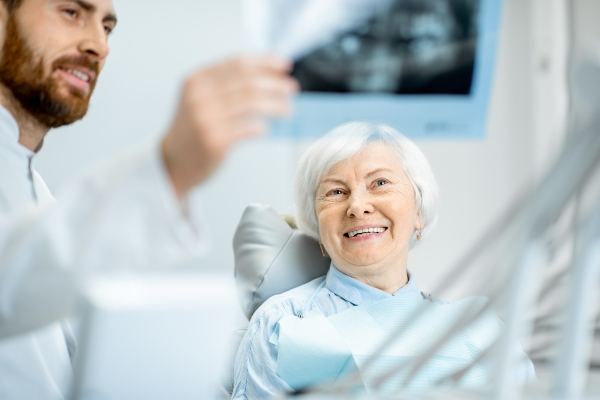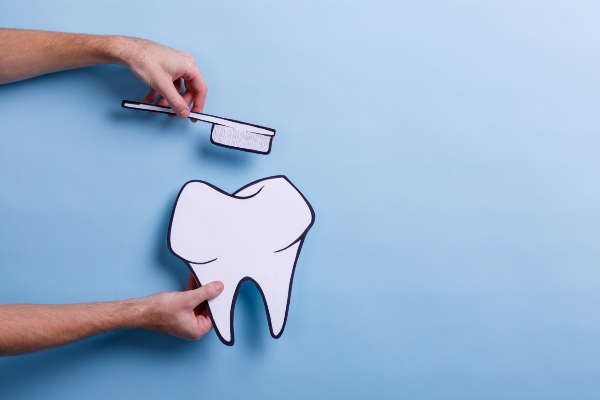Is Invisalign for Teens an Alternative to Braces?
 Invisalign® for Teens is a viable option for some dental patients but not all. Your child's dentist will consider certain factors, such as how crooked the child's teeth are. If your teenager is a candidate for Invisalign, you can weigh the pros and cons of aligners and traditional braces to decide which works with your kid's lifestyle.
Invisalign® for Teens is a viable option for some dental patients but not all. Your child's dentist will consider certain factors, such as how crooked the child's teeth are. If your teenager is a candidate for Invisalign, you can weigh the pros and cons of aligners and traditional braces to decide which works with your kid's lifestyle.
Invisalign
Invisalign for Teens corrects crooked teeth using the application of pressure to the teeth. Clear aligners sit over teeth to create the force that ultimately straightens the patient's teeth. In addition, this alternative to classic braces is more discreet because of the clear color.
How do they work?
Each week, patients visit their dentist for a new set of aligners. With every set, your teen will be one step closer to the smile of their dreams. The straightening devices can be removed to allow the wearer to eat and care for their mouths as normal but should remain in place for at least 22 hours of the day. If your child fails to wear Invisalign as prescribed, it could result in a longer timeframe for the device to work as intended.
What are the benefits?
- Minimal pain
- Extractable
- Simpler to care for teeth
- Barely noticeable
- No damaged brackets or wires
What are the drawbacks?
- Effectiveness varies based on individual dental issues
- Costly
- Necessitates willpower to keep them in the mouth
- Easily misplaced
Traditional Braces
Classic braces consist of brackets bonded to the patient's teeth utilizing dental adhesive. The brackets are connected using wires that lace through them. This shifts your child's teeth into a straighter position. If your teen has a misaligned bite, this option is likely the teeth-straightening method your dentist will suggest.
How do they work?
Traditional braces must be placed at an oral health care provider's office. The placement of brackets and wires requires several hours. The process entails adhering the brackets to the front teeth while metal rings are positioned around molars. The braces work to move teeth using the wires and elastics to shift the teen's teeth and bite. Patients typically see their dental professional to have their braces adjusted twice each month. The adjustments take about 30 minutes.
What are the benefits?
- Effective
- Reasonably priced
- Multiple color options for brackets and band colors available
- Works well for bite issues and extremely crooked teeth
What are the drawbacks?
- Requires exceptional oral care
- Brackets sometimes fall off of teeth
- Certain foods must be given up
- Brackets can aggravate the inside of the mouth
Conclusion
Deciding whether to use Invisalign for Teens or classic braces entails contemplating your child's dental needs and preferences. For example, if your teenager has very crooked teeth or a misaligned bite, they will probably need traditional braces to correct the dental issues. On the other hand, if the patient has only slightly crooked teeth, your child can likely select Invisalign. Speak with your teenager and dentist to decide which option makes sense.
Request an appointment or call Palm Beach Dentistry at 561-225-2057 for an appointment in our Delray Beach office.
Recent Posts
Invisalign® for teens can offer adolescents a more comfortable and more discreet option for straightening their teeth. For years, braces were one of the only options for effectively treating a crooked smile. Even though Invisalign® has been providing an alternative for decades, some people may not be familiar with who it is for and how…
If your teenager is in need of teeth straightening treatment, you may be wondering whether Invisalign® for teens is a viable option. There are pros and cons to everything in life, and Invisalign is no different. Here are four things to think about as you consider the appropriate choice for your child.Invisalign uses clear aligners…
A teenage boy or girl who deals with a crooked smile or uneven bite could be able to use Invisalign® for teens as a corrective treatment. The adolescent and high schools years are often filled with social pressure and a desire for acceptance, and any problems or concerns with a teen’s smile could create self-confidence…


